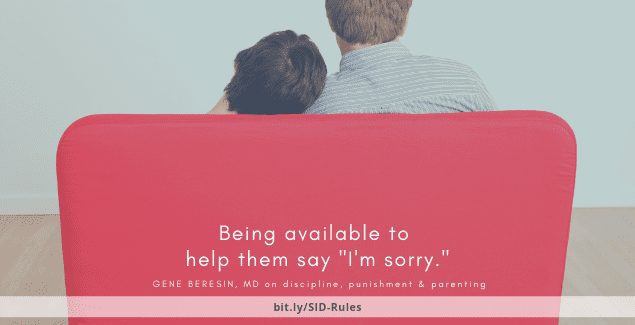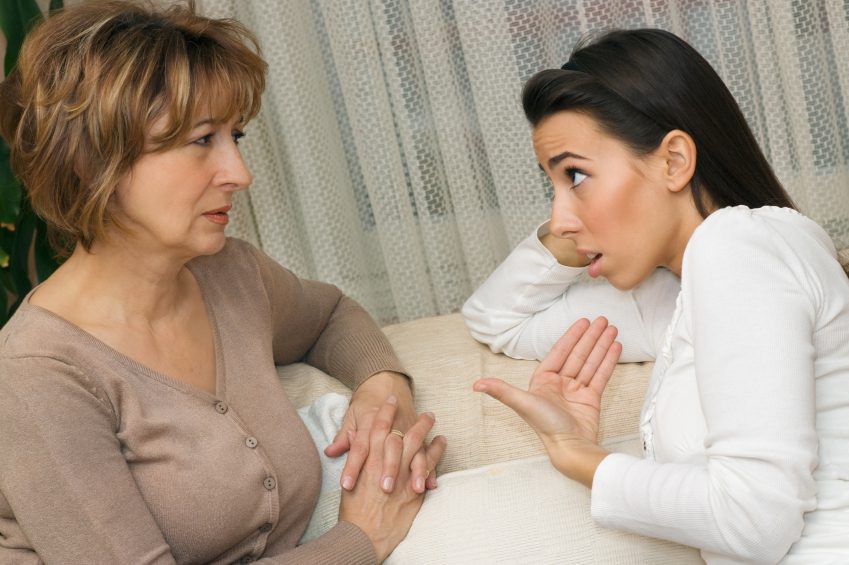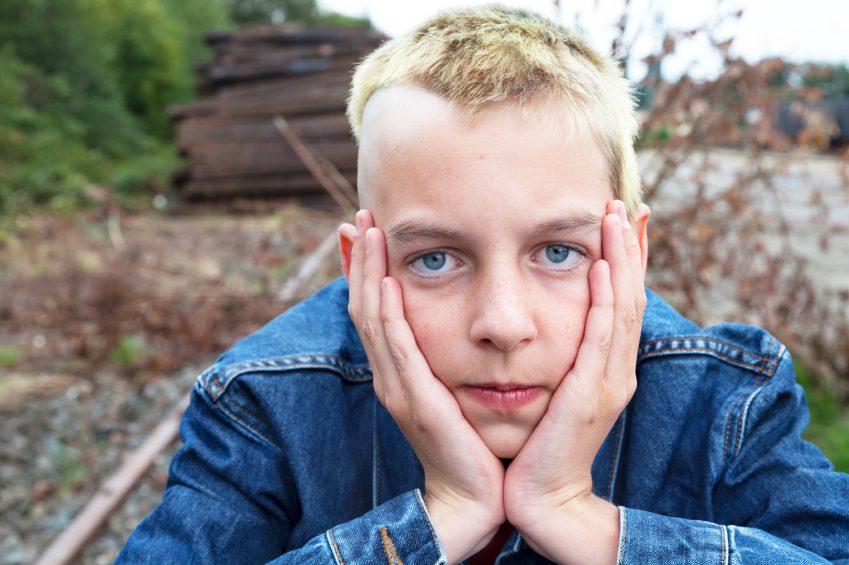Lord Of The Flies In The Classroom: The Complicated World of Discipline And Limits

Posted in: Grade School, Hot Topics, Teenagers, You & Your Family
Topics: Child + Adolescent Development
There is a fairly disturbing video circulating the Internet this week: a substitute teacher appears terrified as students verbally, and even physically, threaten her. One boy goes so far as to raise a chair in the air, as if preparing to strike her.
Although there may be an understandable and perhaps prurient interest that is fed by watching this video, we don’t feel it worthwhile to link it to this blog. After all, we don’t know the whole story, and the video is itself merely a snapshot of what happened. Nevertheless, it’s impossible not to think of this incident, and wonder how it could have gone so badly. There is really no excuse for what we see on the screen.
While the antics of the students in that classroom seem barbaric and out-of-control, you need turn no further than William Golding’s Lord of the Flies to begin to make sense of what might have happened. For those who aren’t familiar with the story, it involves a plane crash on an island where only a handful of British school children survive. Despite their initial efforts to remain civilized and ordered, as they imagined adults in the same circumstances would, eventually, their self-imposed social order collapses. There is bloodshed, tyranny and trauma. Lord of the Flies is not a happy story, and many who read it regard it as a cautionary tale of what happens when humans, and especially young humans, are left without the leverage and infrastructure of a civilized society.
If we start with this novel as a means of understanding what might have happened in that classroom, we are drawn, perhaps uncomfortably, to the possibility that the behavior of these children was an understandable and even predictable result of an absence of rules and regulations that would have otherwise prevented this kind of terrifying moment.
Here’s where what I’m about to say may receive some pushback. I imagine the kids in that classroom, even the young man holding the chair over his head, were also terrified. I haven’t spoken to these kids, and if I did, it would be unethical for me to comment on their state of mind, but please understand that I’m not trying to make a psychiatric diagnosis here. Instead, I’m wondering (and I hope that you’ll wonder with me) what it feels like to have allowed yourself to get so out-of-control, that there is nothing to really hold you back.
I’m wondering, in other words, how the absence of limits and rules affects child development. To be sure, we have no way of knowing whether the children in that classroom have sufficient limits set on their behavior at home. In fact, it is entirely possible that these are good kids with good parents. We really don’t know. What we do know is that, at least for the perceived duration of the video, the classroom was in a state of potentially disastrous anarchy. We also know that a lack of rules and limits makes kids both frightened and dangerous. Remember: the whole point of Lord of the Flies is that these, too, are good kids, with good parents, who find themselves in a kind of no-man’s land where it is entirely up to them to keep alive the values that they’ve been taught. And, as the story progresses, they fail miserably.
With these caveats in mind, let’s talk about disciplining and setting limits for children and adolescents. What do we know about how best to impose disciplinary control? How can we instill in children the self-control that we value and even require for our society to work?
Here are some things to keep in mind:
- Limit-setting starts early. It begins in earnest during toddlerhood, in part because toddlers have developed the motor and cognitive capacities to get themselves into trouble. Still, unpredictable and changeable limits tend to provoke a negative sense of self-worth among kids. Furthermore, when limits are imposed in the absence of reason, even toddlers can become angry and therefore less likely to behave as you’d like. In other words, you can’t just say, “Because I said so”—even to a three-year-old. You need to be consistent and informational with your discipline. That will go a long way in self-selecting for the behavior that you as a parent would like to see in your child—and in your child feeling good about him or herself, too.
- Expect the “because-I-said-so” approach to be even less affective for adolescents. During this stage of development, you need to have consequences that are both enforceable AND understandable. Your teen might not like what you’re saying, but you should do your best to help him or her understand. This is where parenting can be a community effort; if you aren’t sure what to do, check in with friends and neighbors. There’s no way you’re the only one with these kinds of questions.
- Even with appropriate limit-setting, there can be numerous potential impediments to the limits taking hold. For example, psychiatric disorders that lead to heightened impulsivity and decreased executive function can make the ability to follow limits difficult in emotionally-charged environments. This means that a key aspect to implementing sound limits is making sure your child has the capacity to follow your instructions. If a psychiatric illness is making this difficult, get help; talk to your pediatrician or to a mental health professional.
- Socio-economic hardships also predict difficulty in the affective implementation of limits. If the world outside the home is markedly different from that inside, then children, and especially teens, might adopt styles of behavior that they quite accurately deem necessary for their own well-being. In fact, in places where the entire community, regardless of economic status, practices a consistent and firm (but always loving) form of discipline, the discrepancies between kids who “know better” but still get into trouble dissipate. To this end, seemingly out-of-control kids become as much a community issue as they do a classroom or home-related issue.
- Reacting to emotional intensity with emotional intensity usually just leads to…lots of emotional intensity. In other words, when kids get out-of-hand, screaming back at them (something we are all prone to do because, well, we’re human) usually just provokes a screaming match or the kid in the situation shutting down; very little is otherwise accomplished.
These issues are complicated. Again, what we see in that video is awful, but we can’t let its awfulness keep is from carefully dissecting what might have happened and what can happen when kids are operating in the absence of rules. There is NO EXCUSE for the behavior we see in the video; but we also need to understand how kids can get to that point in the first place.

 Share
Share Tweet
Tweet





